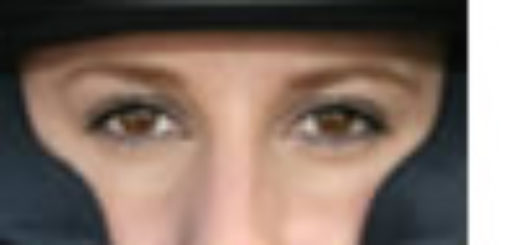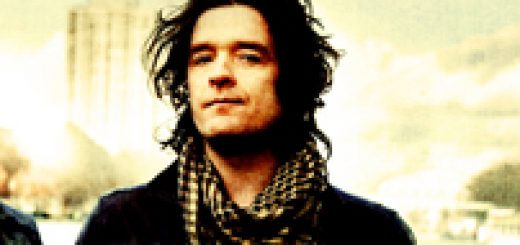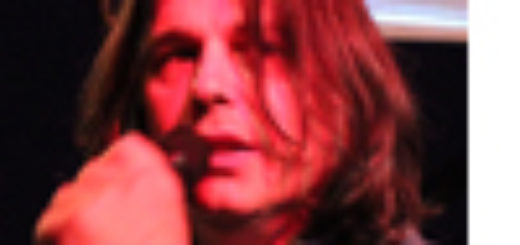Biggest experiment in the world
On the 10 September 2008 the Large Hadron Collider (LHC) at CERN European Organization for Nuclear Research in Geneva for the first time circulated a particle beam in its 27km underground tunnel, in preparation for an experiment that will recreate conditions just after the Big Bang. In an exclusive interview for Opinia scientist Piotr Traczyk who is working on the project gives us his personal view of the world’s biggest experiment.
You are a high energy experimental physicist, musician and a rock climber. Which one of these is the most challenging and which one is the most interesting and why?
PT: Well, calling me a rock climber is maybe a bit of an overstatement. It’s just a hobby, though I admit I like it a lot. In the winter I switch to skiing (but I still try to climb indoors). Now between physics and music… this just keeps shifting. High energy physics is interesting, in its fact more interesting and less complicated than most people seem to think. Its also challenging, obviously, this is a field where you work in large teams of very intelligent people, you really need to push yourself if you want to achieve something. Music for me is more of a passion, but of course also involves a lot of work if you want to keep developing you skills.
How did you find your base within CERN?
PT: The Soltan Institute for Nuclear Studies in Warsaw, where I did my PhD, is a member of the CMS Collaboration (CMS is one of the experiments on CERN’s new collider – LHC). I wrote my thesis on searches for extra dimensions in CMS, so the natural next step was to try to find a position here at CERN, which I finally managed.
How does it feel to be a member of the team that rocked the world with the successful launch of the Large Hadron Collider?
PT: It’s a nice feeling, I like to feel it. Normally you just do your everyday work, adding your small part to the whole project. But I think all the people working here share the feeling of participating in something really major – especially on days like the LHC startup day, when the eyes of the whole world really turned to CERN.
{gallery}traq{/gallery}
„Two tiny dots flicker” and „the great atom adventure is on” is how The Times described the launch of the world’s biggest experiment. How would you summarise the launch?
PT: There’s two thoughts that come to my mind – one is „finally”, since we’re all eager to start analyzing the data from collisions, and the second one is the fact that I think I’m aware of maybe 5% of the actual complexity of the LHC and of how difficult it was to construct and operate, and still I’m amazed by how smoothly the startup went.
It is said that without the experiments that led to the discovery of the electron in 1897 we wouldn’t have many of the items we take for granted like silicon chips, nuclear power, x-rays or MRI. What do you think will be the legacy of the Hadron Experiment?
PT: Well, Thompson wasn’t thinking of transistors when he was studying the electrical conductivity of gasses. This is a feature of this type of science: we make the discoveries, later, other people find use for them. In the LHC we’re not even sure what we will discover, so I’m afraid I cannot promise you time travel being available soon. (laugh)
Can you explain how your research into muons contributes to the LHC experiments and in simple terms describe what a muon is?
PT: A muon, in short, is a particle just like an electron, but heavier. In a collider experiment muons are special because it’s relatively easy to separate them from other particles produced in a collision (there can be hundreds at a time) and measure their properties. And we need to very precisely measure the properties of particles produced in the collisions – it is they that tell us what has actually happened. We will never directly observe a Higgs boson for example. Such particles decay basically at the instant they’re created and only by carefully studying the products of this decay – which we see in our detector – we can try to learn what particle was produced in the first place. It’s kind of like picking bullets from the walls after a gunfight and trying to establish what happened based on that.
Amazingly you still have time for hobby – mountaineering, rock climbing and music. How do you manage to bring all of the aspects in your life together?
PT: Add to this a wife and a little daughter and the answer is simple – I don’t. (laugh)
Anyway, you devote your free time for mountaineering, recently you’ve reached the top of the Mount Blanc. How does it feel?
PT: It’s a complex feeling. Of course it’s satisfactory. I even didn’t feel any wild euphoria at the top, I rather thought about having some rest, taking a few pictures, sending SMS’s, enjoying the moment. Later on, when I was going down and looked behind me, I finally realized where I’d actually climbed to. When the weather is fine, you can see Mount Blanc ruling over on the horizon. Now I look at it differently, having actually been there. It creates such a funny mountain-man relation. I did reach the top, I climbed there, but on the other hand I know I wouldn’t have done it if the mountain hadn’t allowed me to do so.
I believe that you must have a quite busy schedule with your LHC job. How did you join YokaShin and how do you manage to support the band?
PT: We formed the current YokaShin lineup when I was starting to work on my PhD, so I had more time then. And I didn’t have the 1300 km distance to travel to band rehearsals. So now I can only afford to fly to Poland for the bigger concerts, plus I continue to contribute in the fields which don’t require travelling – writing music, producing recordings, etc.
How has come across the idea to record the video to the song 'Wierzę Ci’ with the mobile phone?
PT: The author of the idea is Tomek Targoński, the other guitarist in the band. We needed something to promote our music, something uncommon, spectacular. And we had no money. So we decided to do what nobody else had dome before us – to shoot a whole music video with a mobile phone camera, with a limited budget of 0 PLN. Even the video editing software was free.
YokaShin collaborates with a string quartet and you compose music for that project. What inspires you to write classical notes? How did you learn that skill?
PT: I’m just writing arrangements of our songs with the quartet added. Or, recently, writing new songs with the quartet as part of the band. It’s not classical music – its rock played on classical instruments. I’m trying to study classical pieces for a quartet to learn how to write such stuff, but I’m still way behind.
Personally, do you see yourself expanding your musical or scientific career in the future?
PT: Both, I hope. I don’t think I could live without either.
Thank you for your time and all the best with your projects.





